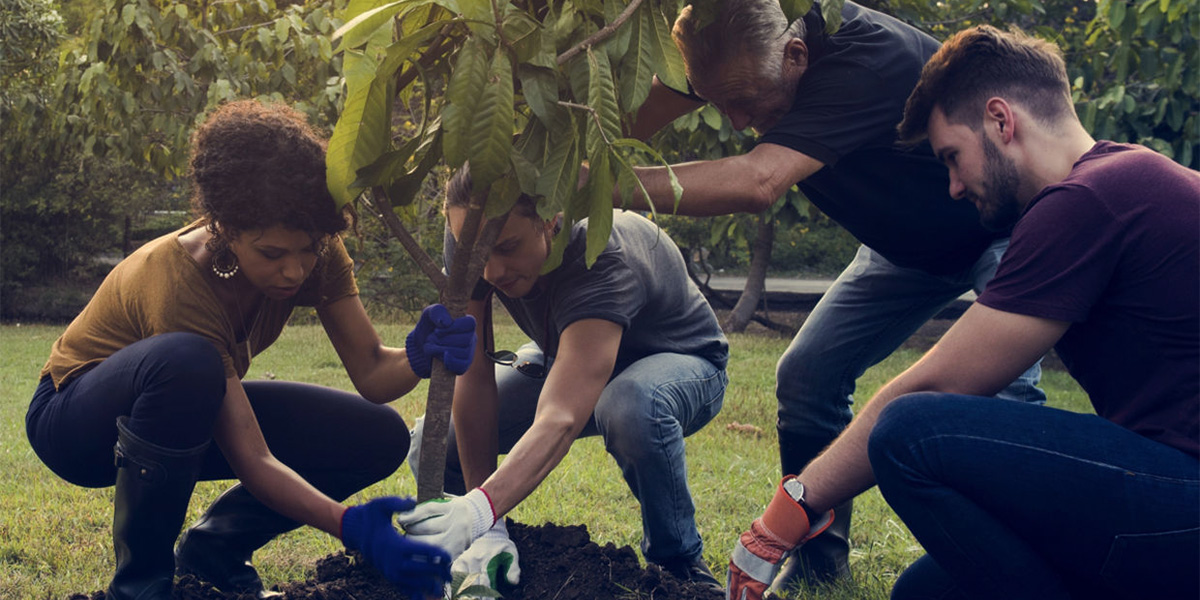What Are Some Ways To Promote Environmental Stewardship In The Nation’S Cities And Landscapes?
To promote environmental stewardship in the nation’s cities and landscapes, consider the following ways:
1. Encourage sustainable landscaping practices in your city, such as using native plants and implementing water conservation methods like rainwater harvesting, to promote environmental responsibility and reduce resource consumption.
2. Advocate for policies that incentivize sustainable practices, such as tax breaks for green roofs or public transportation initiatives, to create eco-friendly cities and landscapes.
3. Participate in community gardening programs and public art projects emphasizing environmental themes to foster environmental stewardship and build strong communities.
4. Promote green infrastructure, such as parks and green spaces, which improve air quality, reduce the urban heat island effect, and provide habitats for urban wildlife.
5. Support public transportation options to decrease carbon emissions, reduce traffic congestion, and promote environmentally responsible urban living.
6. Educate urban populations about environmental stewardship through workshops, seminars, and community events to inspire action in personal yards and neighborhoods.
In the end, all these initiatives play a vital role in promoting environmental stewardship in the nation’s cities and landscapes, ultimately leading to a more sustainable and healthier environment for all.
What Are Some City-Based Initiatives To Encourage Environmental Stewardship?
There are several ways to promote environmental stewardship in the nation’s cities and landscapes. One approach is to implement green infrastructure, such as rain gardens, green roofs, and urban forests, which help manage stormwater runoff and provide habitat for local wildlife. Another method is to encourage the use of public transportation, biking, and walking to reduce air pollution and greenhouse gas emissions. Additionally, local governments can adopt policies that incentivize sustainable practices, such as offering rebates for energy-efficient appliances or requiring new developments to incorporate green design elements.
City-based initiatives to encourage environmental stewardship can include community gardening programs, which not only provide fresh produce for residents but also teach sustainable gardening practices. Another initiative is the creation of eco-districts, where multiple buildings and public spaces work together to conserve resources, reduce waste, and promote overall sustainability. Public art projects that focus on environmental themes can also raise awareness about the importance of preserving our natural resources.
Ultimately, by incorporating these initiatives into city planning and daily life, we can foster a greater sense of environmental stewardship and work together to protect our nation’s cities and landscapes for future generations.
How Can Sustainable Landscaping Practices Promote Environmental Responsibility?

Environmental stewardship is vital to ensure the health and longevity of our planet. Cities and landscapes play a significant role in this effort, and sustainable landscaping practices can help promote environmental responsibility.
One way to promote environmental stewardship in cities and landscapes is through urban greening initiatives. This involves incorporating more green spaces, such as parks, gardens, and green roofs, into urban areas. These green spaces help reduce the urban heat island effect, improve air quality, and provide habitats for local wildlife.
Another method is to encourage the use of native plants in landscaping. Native plants are better adapted to local climate conditions, require less water and maintenance, and provide valuable habitat for local species. Additionally, using native plants reduces the need for chemical pesticides and fertilizers, which can have detrimental effects on local ecosystems.
Water conservation is another essential aspect of sustainable landscaping practices. Installing rainwater harvesting systems, using drought-tolerant plants, and practicing wise irrigation techniques can significantly reduce water consumption in landscapes.
Educating the public about the importance of environmental stewardship and sustainable landscaping practices is also crucial. Community workshops, educational programs, and outreach initiatives can help raise awareness and inspire individuals to take action in their own yards and neighborhoods.
In the end, promoting environmental stewardship in cities and landscapes requires a multi-faceted approach that involves urban greening initiatives, native plant use, water conservation, and public education. By implementing these practices, we can create healthier, more sustainable environments for all living things.
What Role Do Community Gardens Play In Promoting Environmental Stewardship?
Environmental stewardship is crucial for the well-being of our planet and its inhabitants. There are numerous ways to promote environmental stewardship in the nation’s cities and landscapes. Community gardens, for instance, play a significant role in fostering environmental stewardship.
One way to promote environmental stewardship is by encouraging urban greening initiatives. This involves incorporating more green spaces, such as parks, gardens, and trees, into city landscapes. These green spaces not only provide recreational areas for residents but also help to reduce the urban heat island effect, improve air quality, and provide habitats for wildlife.
Another approach is to implement sustainable infrastructure projects, such as rainwater harvesting systems, green roofs, and permeable pavements. These initiatives help to manage stormwater runoff, reduce the burden on the city’s drainage systems, and conserve water resources.
Community gardens are an excellent example of how individuals can contribute to environmental stewardship. These gardens not only provide fresh, locally-grown produce but also serve as educational tools, teaching residents about sustainable gardening practices, composting, and native plant species. Furthermore, community gardens foster a sense of community and belonging, creating a network of like-minded individuals who are committed to making a positive impact on their environment.
To summarize, promoting environmental stewardship in the nation’s cities and landscapes involves a combination of urban greening initiatives, sustainable infrastructure projects, and community-based efforts, such as community gardens. By engaging citizens in these activities, we can work together to create healthier, more sustainable, and vibrant communities for future generations.
How Can Public Transportation Options Help Foster Environmental Stewardship In Urban Areas?
To promote environmental stewardship in the nation’s cities and landscapes, there are several ways to make a positive impact:
1. Implement green infrastructure: Encourage the use of green roofs, rain gardens, and permeable pavement to manage stormwater runoff, reduce urban heat island effect, and improve air quality.
2. Improve public transportation: Invest in efficient, clean public transportation options, such as electric buses and trains, to reduce emissions and encourage more people to use sustainable modes of transportation.
3. Encourage biking and walking: Develop bike lanes, walking paths, and pedestrian-friendly streets to make it easier for people to choose active transportation methods that have a lower environmental impact.
4. Plant more trees: Trees absorb carbon dioxide, produce oxygen, and provide shade to help cool urban areas. Planting more trees can help reduce the urban heat island effect and improve air quality.
5. Reduce waste and pollution: Implement waste reduction programs, such as recycling and composting, and encourage businesses to use sustainable materials and practices to minimize waste and pollution in cities.
6. Educate the public: Raise awareness about environmental stewardship through public education campaigns, community events, and outreach programs to engage citizens in taking actionable steps to protect the environment.
7. Support sustainable urban planning: Advocate for policies and development projects that prioritize energy efficiency, green building design, and walkable, mixed-use neighborhoods to reduce the environmental footprint of cities.
By incorporating these strategies, public transportation options can help foster environmental stewardship in urban areas. Transit-oriented development, improved access to public transportation, and cleaner vehicles all contribute to a more sustainable city landscape.
What Are Some Effective Ways To Educate Urban Populations About Environmental Stewardship?

To promote environmental stewardship in the nation’s cities and landscapes, there are several effective ways to educate urban populations about this crucial responsibility.
Firstly, implementing green infrastructure projects, such as green roofs, rain gardens, and urban forests, can significantly improve the environment while also providing educational opportunities. These projects can teach residents about the importance of preserving natural habitats and mitigating the urban heat island effect.
Secondly, incorporating environmental education into the curriculum of schools and community centers can raise awareness among younger generations. By teaching children about the impact of their actions on the environment, they can grow up to be responsible stewards of the planet.
Thirdly, partnering with local businesses and organizations to host environmental events and workshops can engage the community in hands-on learning experiences. These events can cover topics such as composting, recycling, and energy conservation, empowering urban dwellers to make sustainable choices in their daily lives.
Lastly, utilizing social media and online platforms to share information and success stories can reach a wider audience. By showcasing the benefits of environmental stewardship and providing resources for further learning, urban populations can be inspired to take action and protect their local environment.
In essence, promoting environmental stewardship in cities and landscapes requires a multifaceted approach that involves education, community engagement, and the integration of sustainable practices into daily life. By working together, we can create a more sustainable and resilient future for our nation’s urban populations and natural environments.


